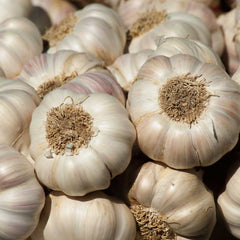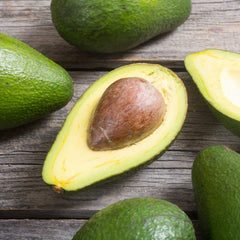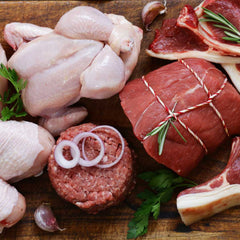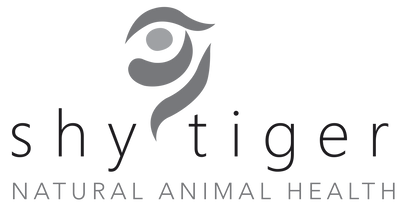Your Cart is Empty
FREE Shipping now available in Australia for orders over $65
FREE Shipping now available in Australia for orders over $65
Myth Busting Pet Nutrition

Myth Busting and Navigating Pet Nutrition
When it comes to feeding our pets, the options are plentiful. However, amidst the array of choices, there are several often ignored or unjustly sidelined due to misconceptions. Are these ingredients truly harmful to your pet's health? Join me on a journey through the labyrinth of pet nutrition as we debunk myths and uncover the facts behind what nourishes our furry companions. As a veterinarian passionate about pet health and nutrition, I'm here to guide you through the maze of misinformation with clarity and compassion. Together, we'll explore common myths in the pet food industry, addressing misconceptions and empowering you to make informed decisions about your pet's diet.
Garlic: A Controversial Vegetable

Garlic has long been surrounded by controversy in pet nutrition circles. Many pet owners believe it to be toxic to dogs, a misconception perpetuated through social media and hearsay. However, while other members of the Allium family, like onions, can indeed be harmful to pets due to their thiosulfate content, garlic contains minimal amounts of this compound. In fact, studies have shown that garlic, when consumed in moderation, poses no significant threat to dogs. We recommend a guideline of half to one clove per 15 to 20 kilograms of body weight, emphasising the numerous health benefits garlic offers, including immune system support and flea prevention.
Avocado: Not Just for Humans

Another common misconception surrounds avocados, with many believing them to be toxic to dogs due to their persin content. However, this is just another myth, research demonstrates the safety of avocado flesh for canine consumption. While caution should be exercised with the skin and seed due to their higher persin levels, feeding avocado flesh in moderation can provide valuable nutrients to dogs. We encourage pet owners to integrate avocado into their pet's diet responsibly, reaping its benefits without exposing them to potential risks.
Mushrooms: A Secret Superfood

Mushrooms have garnered attention in recent years for their medicinal properties, particularly in supporting cognitive function and immune health in older dogs. We find the effects of it benefits through both culinary and medicinal mushrooms, a great addition to boost your pet’s health and vary their diet. However, we do caution against foraging wild mushrooms, which can pose risks. We would much rather recommend incorporating cooked mushrooms into pet meals as a nutrient-rich addition.
Raw Meat: Exploring Raw Feeding and Bacterial Concerns

The debate over raw meat diets for pets often centers on bacterial contamination. As a veterinarian specialising in pet nutrition, I address these concerns with insight. Understanding that pets, cats and dogs, are carnivores and bacteria are omnipresent is crucial. As responsible pet owners, we must select reputable suppliers for raw diets, emphasising quality sourcing and proper handling. While bacteria like salmonella and E. coli can pose risks, they are manageable with appropriate precautions. Contrary to belief, processed pet foods, not raw diets, see higher bacterial recalls. In conclusion, informed decision-making and sensible food handling practices are key to providing pets with safe, nutritious raw meals.
Poultry and Pet Safety: Dispelling Myths and Providing Guidance

As a veterinarian, I often encounter questions about feeding chicken necks to dogs. Dogs, like humans, can choke on a variety of objects, and chicken necks pose a particularly high risk due to their small size and the tendency of dogs to guzzle them down quickly. Instead of chicken necks, we recommend alternatives such as turkey necks, which are larger and less likely to be guzzled. Additionally, teaching dogs to chew on bones can help prevent choking incidents. While it's true that chicken necks will eventually digest, it's best to err on the side of caution and choose safer options for your pet's enjoyment.

An important distinction between raw and cooked bones lies in their potential harm. While raw bones are generally safer for consumption, cooked bones can pose serious risks, such as splintering and causing bowel perforation. Poultry bones, though softer, can still pose risks and lead to discomfort or conditions like pancreatitis. Additionally, there was a study in 2018 linking raw chicken consumption to Coonhound paralysis in dogs, suggesting a potential association with campylobacter bacteria triggering an immune response. However, further scrutiny of the research revealed flaws, and it's unclear whether the paralysis is directly linked to raw chicken consumption.
Despite understandable concerns, it's essential to consider the prevalence of chicken neck feeding and the rarity of paralysis cases. While caution is warranted, there are various bone options available for dogs, and personal experiences and common sense should guide feeding practices. Personally, I feed chicken necks to my dogs, who are small and take their time chewing, reducing choking risks. However, I acknowledge the fear of choking and opt to minimise risks by exploring alternative bone options. Ultimately, pet owners have an array of choices, and it's essential to weigh risks and benefits based on individual circumstances and preferences.
Embracing Change: Navigating Pet Nutrition
As we navigate through the debunked myths surrounding pet nutrition, it's crucial to address the challenge of changing perspectives. I acknowledge the resistance among pet parents and even professionals to adopt alternative approaches, emphasising the importance of empathy and patience in facilitating this transition. Understanding that embracing new truths can be accompanied by guilt and uncertainty, I encourage kindness and support rather than blame.
If you're eager to explore alternative food options for your pet and shift your mindset towards pet nutrition, tune in to our podcast where we dive into in-depth discussions on this very topic, Paws and Listen: Myth Busting Dog Nutrition with Dr. Nicole - Part 1. For more valuable insights and tips on pet nutrition, be sure to visit our friends at Big Dog Pet Foods.
As always, let's prioritise factual information over assumptions when it comes to ensuring optimal pet nutrition. Remember to approach this journey with compassion for both your beloved pet and yourself as you navigate through the wealth of knowledge. By simply reading this, you've taken a significant step towards enhancing your pet's well-being. Embrace this newfound understanding, and together, you and your furry friend can reap the rewards of a healthier, happier life.

Myth Busting Pet Nutrition
Ever wondered if what you're feeding your pet is truly safe? Dive into the world of pet nutrition myths as we uncover the truth behind commonly misunderstood ingredients. From garlic to avocado and mushrooms, we'll explore the facts and fiction, empowering you to make informed choices for your pet's diet.

Pet Dental Care Matters
Pets can't express dental discomfort like humans. It's a silent problem, progressing stealthily. As a vet, I've made it my mission to educate about dental hygiene and provide a simple solution for your pet's optimal oral health and overall well-being.

Cognitive Decline in Pets
Discover how to navigate cognitive decline in pets with compassion and knowledge. From dietary support to holistic management, empower your furry friend's twilight years. Learn more about enhancing their well-being today.








